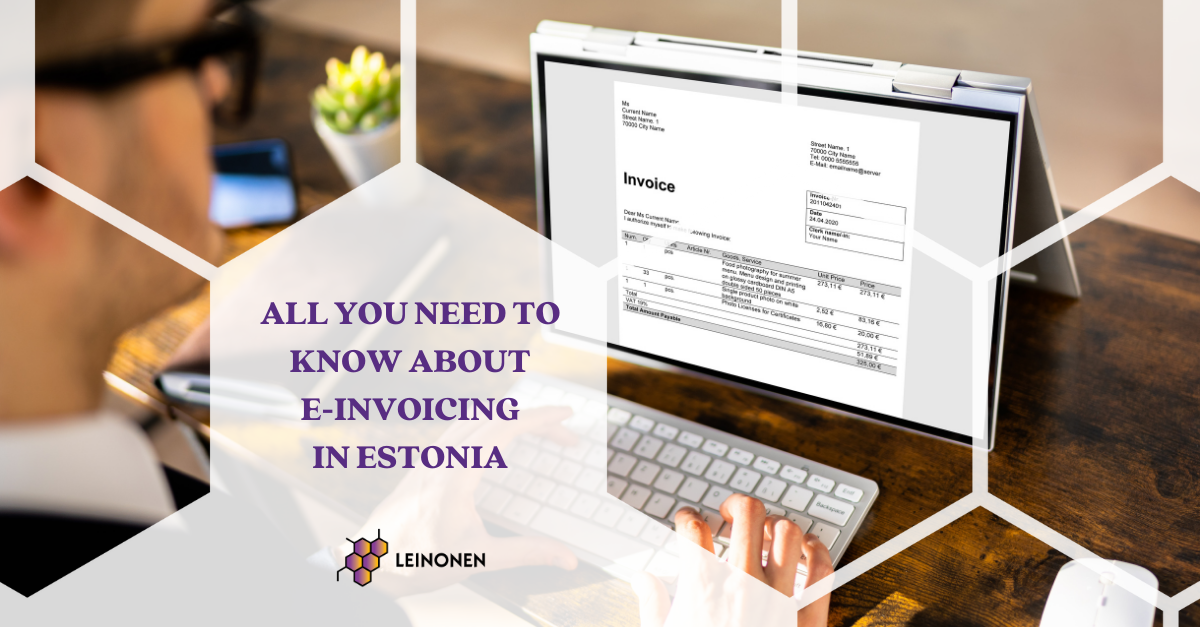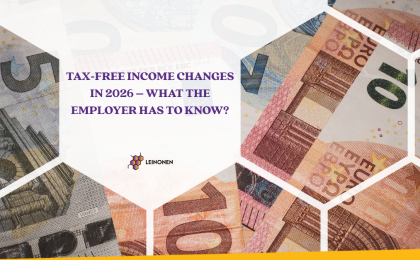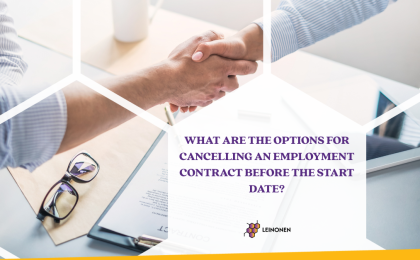Since 2020, only e-invoices can be sent to Estonian public sector organizations. Now the government plans to go one step further and oblige all businesses to send only e-invoices to each other. Whether you already use e-invoicing or consider making the switch, you’ll get up to date information about regulations as well as how to get started from this article.
What is electronic invoicing?
Electronic invoicing (e-invoicing) is the electronic exchange of invoicing documents between a supplier and a buyer. Unlike paper invoices or invoices sent as attachments to an email, e-invoices) are automatically imported into a special accounting system without the need for manual entry and are machine-readable.
In Estonian language, e-invoice is called “e-arve”.
E-invoicing regulations and best practices in Estonia
The Estonian Accounting Act states that e-invoice is mandatory upon transfer of goods or services to a public sector (the B2G environment). This means that all state organizations and municipalities in Estonia are required to accept e- invoices only. If you want to sell your services to public sector in Estonia, you must be able to send e-invoice with a specific format, either the Estonian standard (national XML-based standard) or the European standard on e-Invoicing.
As for now, between businesses (for B2B environment), e-invoicing is allowed, however not mandatory. But the Estonian government plans to make e-invoicing mandatory for businesses also. European Union is also moving in that direction.
Benefits of e-invoicing in Estonia and globally
Direct exchange of data between any 2 accounting systems makes doing business smoother, faster and safer. With less manual handling and processing, it can reduce admin, errors, and delays – and help speed up processing and payment, to improve business cash flow. E-invoicing also reduces environmental impact.
Using e-invoicing makes international business transactions much easier for both supplier and the customer. It also allows to connect to international networks such as Peppol and send cross-border invoices simply and securely. Peppol’s innovative structure adds an extra layer of security which helps remove the risk of interception or fraud.
Another benefit is that the automatic archiving of e-invoices brings the end to the struggle with invoice archiving compliance. With e-invoicing you don’t have to store another paper invoice, save a PDF version on a fileserver or unsecure desktops, or worry over keeping up with regulatory requirements.
How e-invoicing changes your accounting processes and financial management
Accountants still need to control bookkeeping, but e-invoicing saves a lot of time and makes it easier to have an overview of received invoices instead of having hundreds of paper invoices on the desk. Invoices move directly to the accounting software, where AI can give suggestions for bookkeeping or even automatically book them.
E- invoice’s structured data allows you to utilize data analytics tools. Through the structured data, trends can be analyzed, and patterns identified which can lead to data-driven decisions to improve the financial performance of your business.
E-invoicing software solutions in Estonia
You must have an accounting software or ERP in place to generate e-invoices. You can alternatively outsource the generation of e-invoices to different software providers.
The most widely used in Estonia are Telema, Fitekin, Finbite, Envoice, Billberry, E-arveldaja, Unifiedpost or public software of the Centre of Registers and Information Systems.
All these service and software providers use a national standard based on XML, or/and the European standard on e-invoicing.
How to get started?
To start receiving e-invoices straight to your financial software:
- Activate the receipt of e-invoices in your financial software (if your financial software allows it).
- Confirm your e-invoice operator in the business register. This way, other companies will know that you accept e-invoices.
- Inform your vendors that you want to receive e-invoices from them in the future.
- Receive your first e-invoice.
To start sending e-invoices from your financial software:
- Activate the sending of e-invoices in your financial software (make sure your financial software allows it).
- Set e-invoice as the billing channel on the customer card of all customers who accept e-invoices. You can get more information from your financial software, e-invoice operator, or business register.
- Submit your first e-invoice.
Leinonen Estonia can help you move from paper invoicing to e-invoicing
In conclusion, e-invoicing helps to streamline your financial operations, enhance invoice accuracy, and contribute to environmental sustainability.
We can help you get started with e-invoicing in Estonia. For more information and for advice on what practical steps you can take towards automation, please contact us today.
We are happy to advise you!





